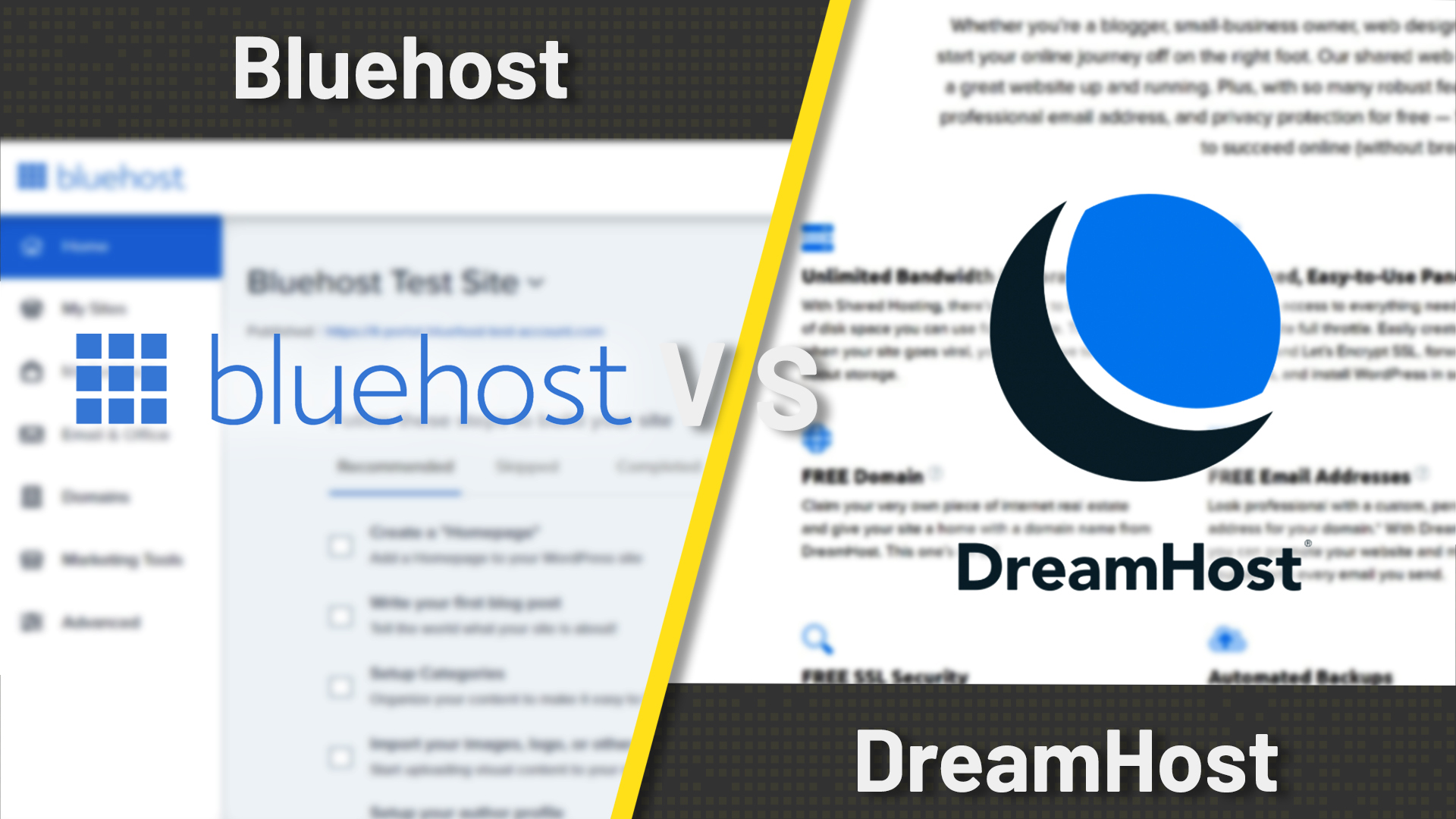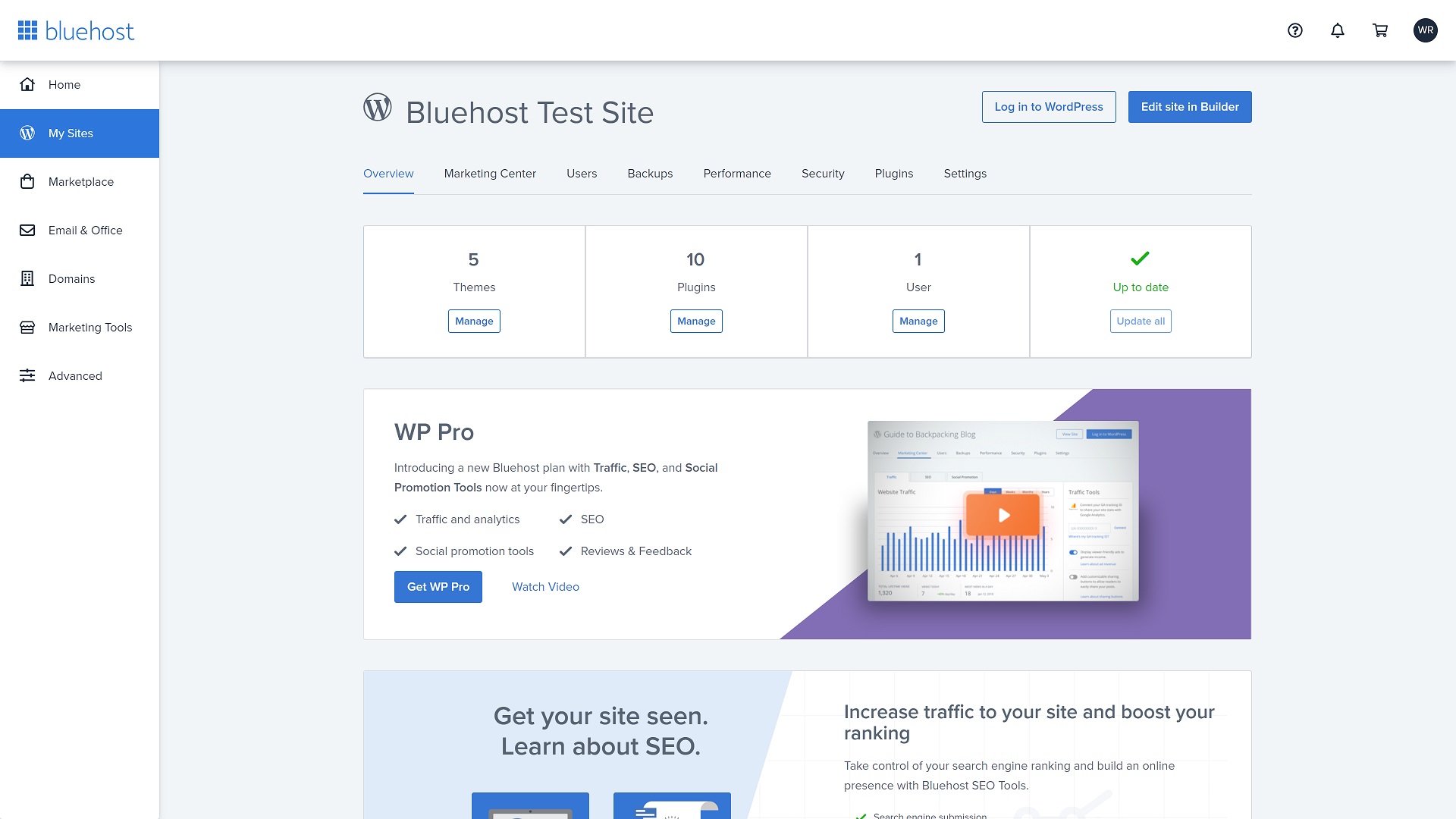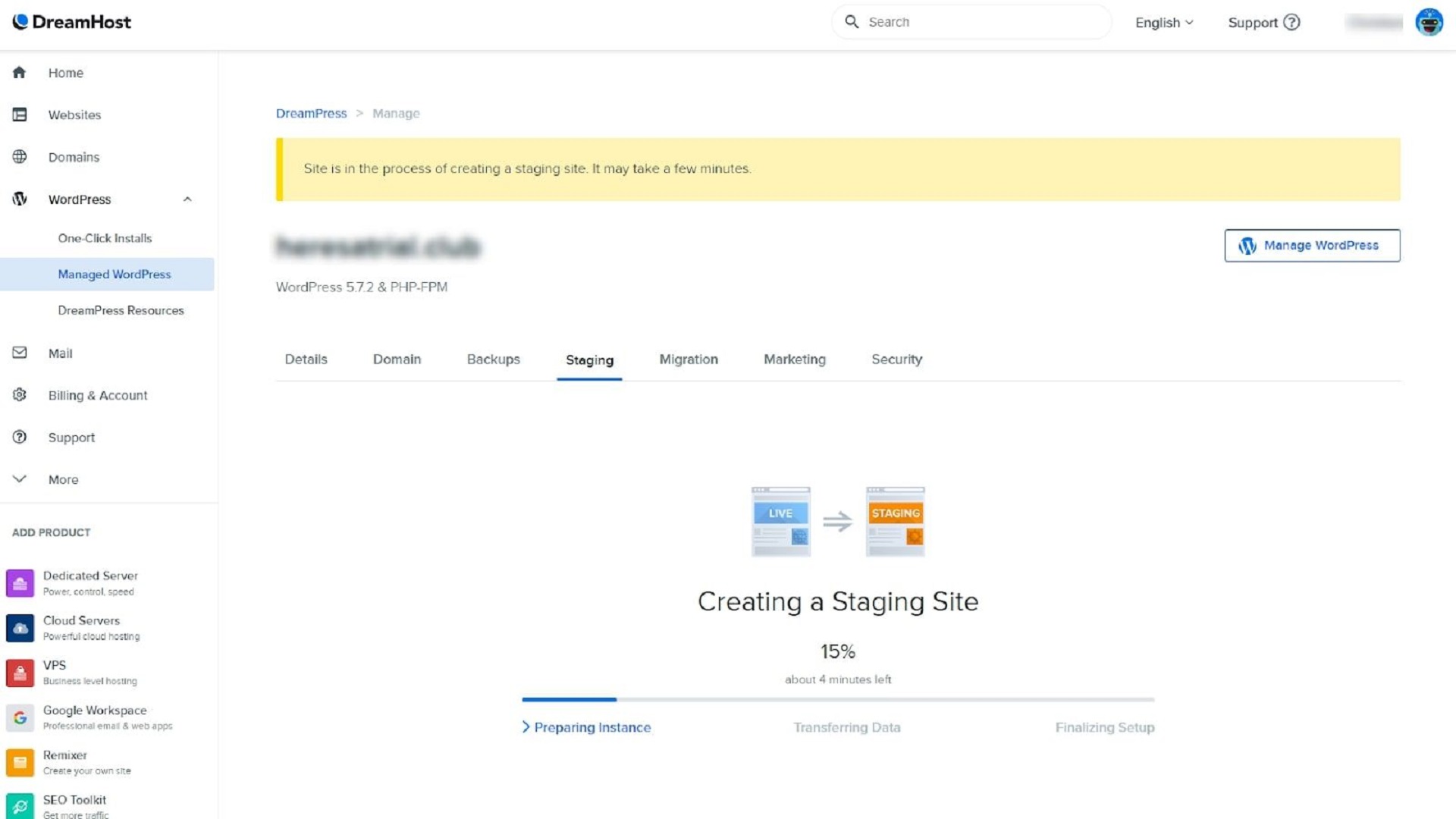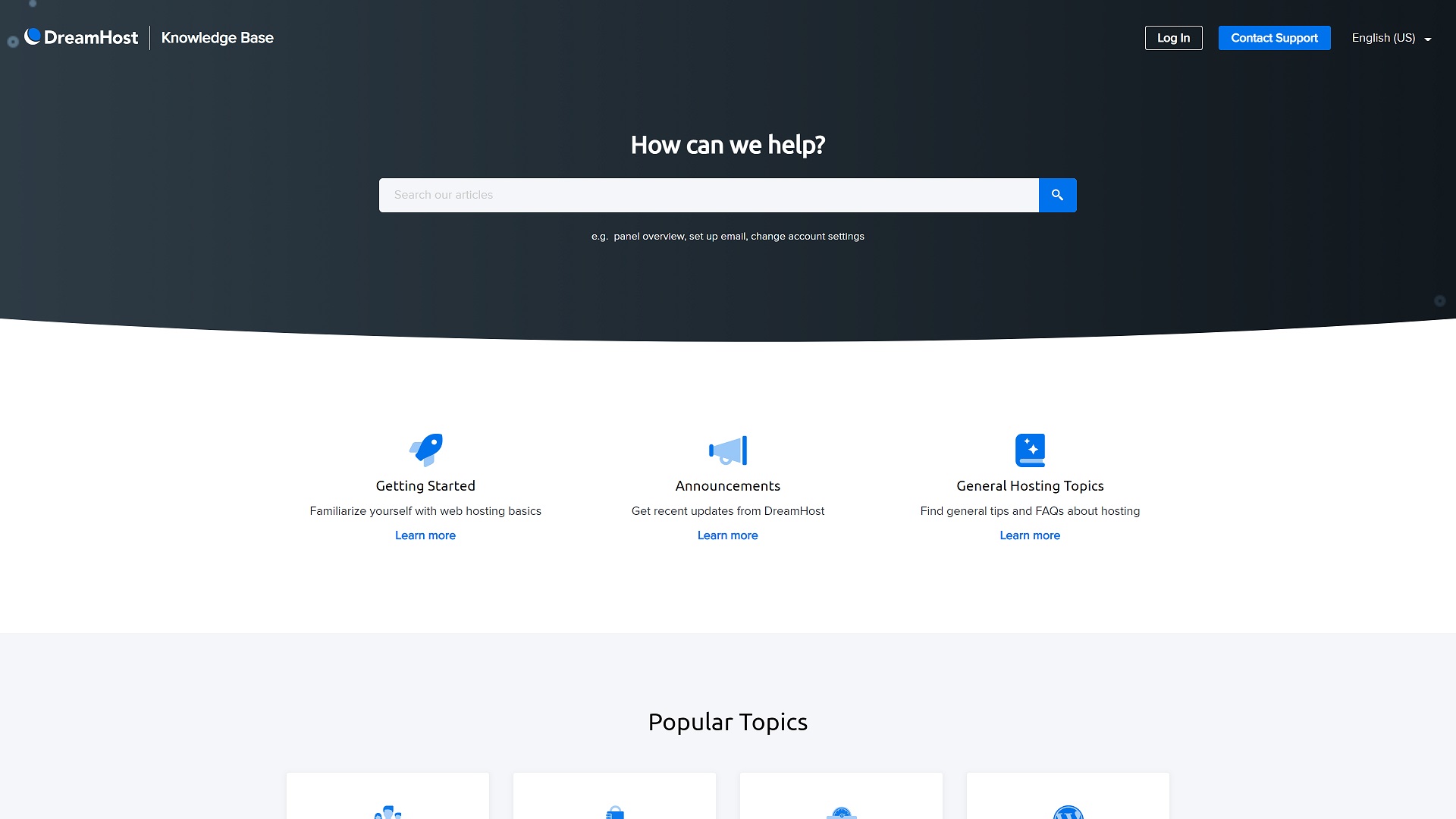Bluehost vs DreamHost
We compare the prices, user interface, functionality, and main features of Bluehost vs DreamHost to help you decide which to use


Web hosting companies like Bluehost and DreamHost provide you with the hardware and server resources that you need to run a website. You can host your own site, but it’s recommended to use one of the best web hosting services to save time and money.
In our Bluehost vs DreamHost comparison, we compare two of the world’s leading hosts. Both offer a range of hosting products, including high-value shared hosting. But are they equal? Which option can best meet your needs?
Here, we look at the two platforms’ prices, user interface, main features, and more to help you decide.
- Bluehost: top tools and competitive prices
Bluehost ranks among the top web hosts thanks to reasonably-priced hosting, scalability, a 60-day money-back guarantee, and much more. Its cheapest shared hosting plan is £2.34 a month (36-month plan), with 50GB of storage and unmetered bandwidth. - DreamHost: great performance and support
Offering hosting across multiple types, DreamHost provides top performance with value-adding features, specifically a focus on privacy and security. Alongside competitive pricing plans that are consistenly cheaper than competitors, it's worth considering.
Bluehost vs DreamHost: What we compared
- User interface and setup
- Pricing
- Server resources
- Customer service
- Domain registration and management
- Website builder
- Security features
- Which provider is best for me?
- What our reviewers said
- Alternatives to Bluehost and DreamHost
User interface and setup

Both Bluehost and DreamHost target beginners and offer fast, streamlined setup processes.
With Bluehost, you will immediately be asked whether you want to use the Bluehost website builder or install WordPress. If you select one of these options, you will need to work through a couple of short steps to get your site up and running. However, you can also skip this if you would like to use a different CMS.
The main Bluehost management dashboard is excellent. It contains links to and management tools for each of your hosting plans. You will also find a domain management portal, a marketplace, and various email and marketing tools.

For more technical management, Bluehost uses the industry-standard cPanel control panel. It’s beginner-friendly and easy to use, though it’s nothing too fancy. cPanel isn’t available with DreamHost, but its own proprietary control panel is arguably better.
Sign up today and you will receive a free copy of our Future Focus 2025 report - the leading guidance on AI, cybersecurity and other IT challenges as per 700+ senior executives
DreamHost also has a central management dashboard. It’s a little more confusing than Bluehost’s, but it has everything that you need to host a new website or project. For example, the left of the main dashboard contains a menu that enables you to manage websites, domains, WordPress sites, email, and more.
Pricing
Both Bluehost and DreamHost offer a selection of shared, VPS, WordPress, and dedicated hosting options. Their shared plans are the most popular, and we focused on them here.
Bluehost's pricing plans
Bluehost has four plans, with prices ranging from £2.34 to £11.08 a month for an initial 12-month plan (renewing at £7.93 to £21.43). The cheapest plan supports one website and has 50GB of storage, while the other three support unlimited websites with unlimited storage.
| Header Cell - Column 0 | Introductory price | Renewal price |
|---|---|---|
| Basic/Shared Starter | £2.34 | £7.93 |
| Plus | £5.92 | £11.11 |
| Choice Plus/Shared Unlimited | £5.92 | £11.11 |
| Pro | £11.08 | £21.43 |
DreamHost's pricing plans
DreamHost only has two shared hosting plans. The cheapest Shared Starter plan costs £2.42 a month for the first year (£6.55 on renewal) and supports a single website. The Shared Unlimited plan also costs £2.42 a month for the first year for unlimited website connections, but this increases to £11.47 on renewal.
Overall, DreamHost offers much better flexibility and value for money than Bluehost.
| Header Cell - Column 0 | Introductory price | Renewal price |
|---|---|---|
| Basic/Shared Starter | £2.42 | £6.55 |
| Choice Plus/Shared Unlimited | £2.42 | £11.47 |
Server resources
The number of server resources included with your plan will dictate how much traffic your site can handle and how many files you can store.
DreamHost appears excellent on this front, offering unlimited bandwidth and storage with both of its shared hosting plans. However, a closer look at the company’s terms and conditions shows that this isn’t really the case. Once your website’s storage or bandwidth use begins to affect the normal function of the shared server that you’re using, you will be asked to upgrade.
Bluehost offers similar resources. All four plans come with unmetered bandwidth. The cheapest shared option has 50GB of storage, and the other three come with unlimited space. But the same catch applies here as it did with DreamHost: if you start using too many resources, you will be asked to upgrade.
Customer service

Bluehost offers decent customer service through its 24/7 phone and live chat support channels. The team is friendly and responsive, although we do have a few concerns about the agents’ ability to help with technical queries.
DreamHost offers a similar 24/7 live chat support service. Help is also available by requesting a callback from a member of the customer service team, but this costs extra.
On the plus side, both DreamHost and Bluehost offer excellent self-help resources. The DreamHost Knowledge Base is tidy, with a built-in search bar and cleverly chosen categories to help you narrow your search. There are many articles and guides, and the DreamHost Academy contains more general resources to help you create and manage your website.
Bluehost’s knowledge base is a little more cluttered and harder to navigate. But you can still use the integrated search bar to find what you need, and the resources are excellent.
It’s hard to separate the two companies here, but DreamHost’s lack of free phone or email support is concerning.
Domain registration and management

Both Bluehost and DreamHost include domain registration and management in their extra services. This enables you to register and store your domains alongside your hosting accounts, streamlining ongoing management.
With DreamHost, you will have access to a wide range of TLDs. Popular .com domains start at just £6.55 a year, while budget extensions, such as .xyz, start from just 73p a year. All DreamHost domains come with free domain privacy, which is nice to see, and unlimited free subdomains. You can even transfer an existing domain to your DreamHost account.
Bluehost is much more expensive, with .com domains starting from £10.65 a year. Budget options do fall to a couple of dollars a year, but there’s a catch. Domain privacy isn’t free, and you will have to pay an additional £9.74 a year for this.
Website builder

A beginner-friendly website builder can help you create a new site with a minimum amount of fuss. Both Bluehost and DreamHost offer some sort of WordPress website builder.
The new Bluehost WordPress website builder is great, albeit simple, and ranks among the best website builders. It enables drag-and-drop editing and is much easier to use than the native WordPress editor. You will be provided with a personalised theme when you get started, and all customisations are converted to clear code. Ongoing management is done via the main WordPress dashboard.
DreamHost’s builder is even more impressive. It’s integrated directly with the WordPress dashboard, which means you can access drag-and-drop customisation from your main editor. The design flexibility here is excellent, and there are many tools to help you get the most out of your site.
Security features
Bluehost falls down with its security measures. At the base level, it comes with basic server monitoring and free SSL certificates. You can use Cloudflare to set up DDoS protection for free, but there’s little else included. For an extra price, you can access automatic backups, proactive server monitoring, and advanced malware removal tools, but this can get quite expensive.
Conversely, DreamHost’s security is excellent. Like Bluehost, it offers free DDoS protection and SSL certificates, but multi-factor authentication is available, and all DreamHost servers are protected by an advanced ModSecurity firewall. However, malware scanning and removal is only available with DreamShield, which costs £2.46 a month.
Once again, DreamHost takes the win here.
Which web hosting provider is best for me?
DreamHost stands out above Bluehost on almost every level, from its prices to its advanced website builder and domain registration tools. Both platforms are aimed at beginners, but DreamHost just does it better.
DreamHost also offers better value for money on both short and long-term subscriptions. Its native dashboard is a little confusing to get started with, but no more than Bluehost’s cPanel control panel is.
Both platforms offer unlimited-everything plans and decent customer service, which is nice to see. But DreamHost surges ahead when it comes to security, domain registration, and the website builder.
Ultimately, we suggest going for DreamHost over Bluehost if you’re looking for a cheap, beginner-friendly hosting option. Look elsewhere if you need something more powerful.
Bluehost and DreamHost features, compared
| Header Cell - Column 0 | Bluehost | DreamHost |
|---|---|---|
| UI and setup | Great | Great |
| Pricing | Poor | Good |
| Server resources | Great | Great |
| Customer service | Good | Good |
| Domain registration and management | Good | Great |
| Website builder | Good | Great |
| Security features | Poor | Great |
What our reviewers said
Bluehost
“At the end of the day, Bluehost is an okay option for beginners looking for a basic host. If you can look past the terrible performance and somewhat limited features, you will find a beginner-friendly interface and a streamlined site-creation experience. But if you want something even slightly advanced, look elsewhere.”
- Score: 3.5/5
DreamHost
“DreamHost’s pricing is highly competitive. Performance is good, too, and plans are straightforward to understand and packed with value-adding features. Above all, DreamHost has a focus on privacy and security not often seen in most bigger web hosts. It may have less than half as many customers as bigger rivals Bluehost and HostGator, but it punches above its weight.”
- Score: 3.5/5
Alternatives to Bluehost and DreamHost
Hostinger is an excellent alternative for those on a tight budget. It offers some of the best cheap web hosting services that we’ve seen, with a focus on security and ease of use. Prices start from just £1.99 a month for a basic shared hosting plan, but there are plenty of more powerful options available.
If you’re looking for something a little more robust to build a WordPress site with, WP Engine stands out. It offers managed WordPress solutions supported by daily backups, an integrated WordPress website builder, and loads of developer tools. However, it’s expensive compared to Bluehost and DreamHost.
You might like to go for something even more powerful. Hostwinds has a wide selection of hosting products, including some of the best VPS and dedicated server systems that we’ve seen. It is expensive, but its plans are highly configurable and designed for large, resource-demanding projects.
Further reading on web hosting
To find out more about the best alternatives to Bluehost and DreamHost, check out our guides to the best unlimited web hosting, and the best VPS hosting. If you’re still unclear about why you need hosting, you can find out more in our article asking what is web hosting?
Daniel is a freelance technology and finance writer, whose scientific background in the natural sciences lends rigour and nuance to his informative, accessible articles. His reviews on website builders, web hosting and business web development grace the virtual pages of TechRadar Pro, WebsiteHostingRating.com, and HostingReview.com, as well as IT Pro Portal. Well-versed in blockchain, cloud computing and cybersecurity, Daniel takes a keen interest in all aspects of B2B and B2C tech.
-
 Google CEO Sundar Pichai says vibe coding has made software development ‘exciting again’ — developers might disagree
Google CEO Sundar Pichai says vibe coding has made software development ‘exciting again’ — developers might disagreeNews Google CEO Sundar Pichai claims software development has become “exciting again” since the rise of vibe coding, but some devs are still on the fence about using AI to code.
-
 15-year-old revealed as key player in Scattered LAPSUS$ Hunters
15-year-old revealed as key player in Scattered LAPSUS$ HuntersNews 'Rey' says he's trying to leave Scattered LAPSUS$ Hunters and is prepared to cooperate with law enforcement
